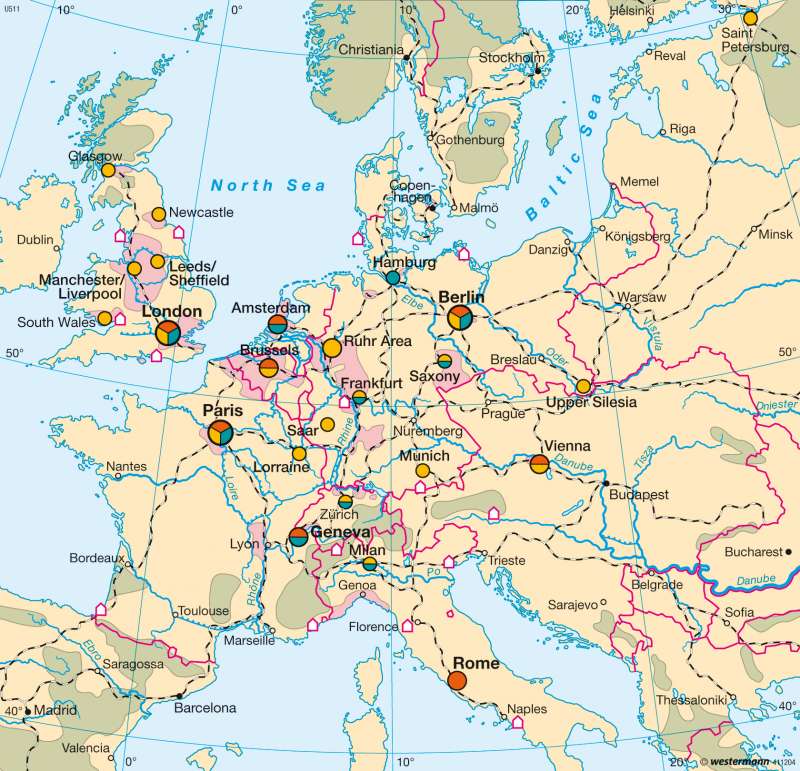Interconnected economic centres circa 1900
Europe - Economy
978-3-14-100790-9 | Page 50 | Ill. 2

Information
At the turn of the 19th to the 20th century, an economic structure had emerged in Europe on the basis of industrialization that was characterized by a core region cutting across national borders. This was made possible above all by the high quality of transport services on the ever-expanding railway network, by which significantly more goods and raw materials could be exchanged than had been possible just a few decades previously.Structure of the Economy
Noticeable in the pattern of land use in Europe are areas that largely remain in their natural state and show little of man's stamp — for example the Alpine region or parts of north-eastern Spain. In other regions, which in the second half of the 19th century had not yet been improved, agricultural use is now predominant. This change is striking e.g. to the west of Belgrade. Agricultural regions dominate overall, but the urban and industrial centres have grown continuously and cover significantly more territory than just five decades earlier, as is clear among others in the English Midlands, the expansion in Saxony and the fusion of districts along the Rhine.
Railway lines now reach into previously peripheral regions, for example to Warsaw and St. Petersburg via Berlin in the east, and France in the west, whose centralized structure — oriented on Paris — has formed its first contours.
Main Centres
The turn of the 20th century was the era of the up-and-coming metropolis of Berlin. As Europe's third-largest city after Paris and London, the capital of the German Empire had an importance as a centre for politics, culture, finance and economic innovation that reached across the entire globe. In the year 1900 some 1.9 million people lived in old Berlin; if the outlying towns are included, the Berlin conurbation had as many as 2.7 million inhabitants in an otherwise sparsely-settled region.
London, with its 6.5 million citizens, was the largest city in the world at that time ahead of New York and Tokyo with over 5 million inhabitants each. Paris was in fourth place with 4 million inhabitants, followed by Berlin. Thus the most important urban concentration of this epoch was to be found in Europe.
The three world cities were supplemented by smaller centres of continental importance. The Midlands and the Ruhr Area were unbeaten as industrial centres, Amsterdam scored in the fields of politics, culture and finance, while politics, culture and the innovative industries of that epoch were dominant in Brussels. One of the centres of European finance had become established in Geneva, while Vienna was a focus of politics and culture as well as of industry, and the aura of Rome was founded on politics and culture.
Beside this core, the fringe areas — in the west, north and east of the continent — were a comparative economic "desert".
D. Falk; Ü: J. Attfield




